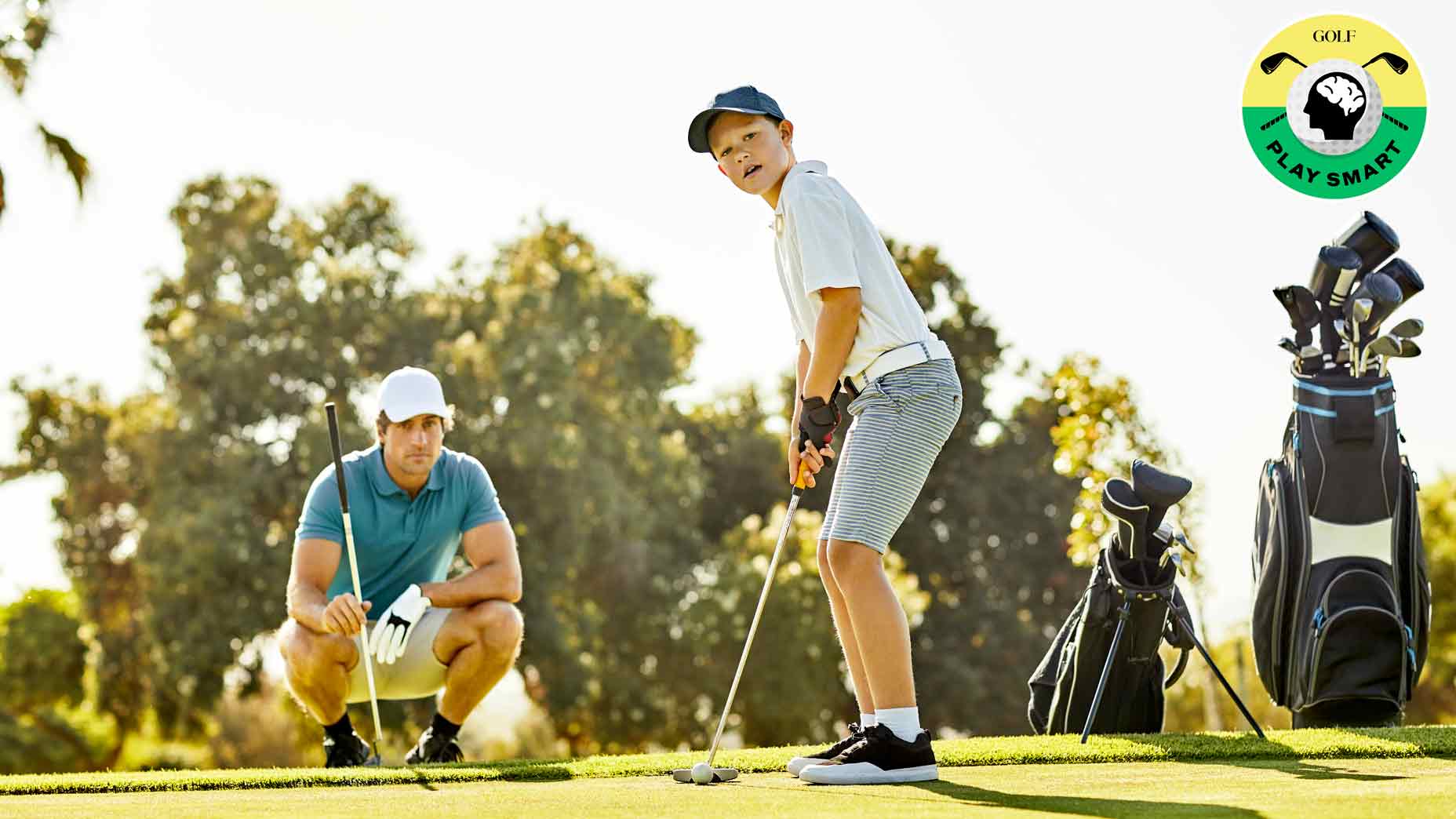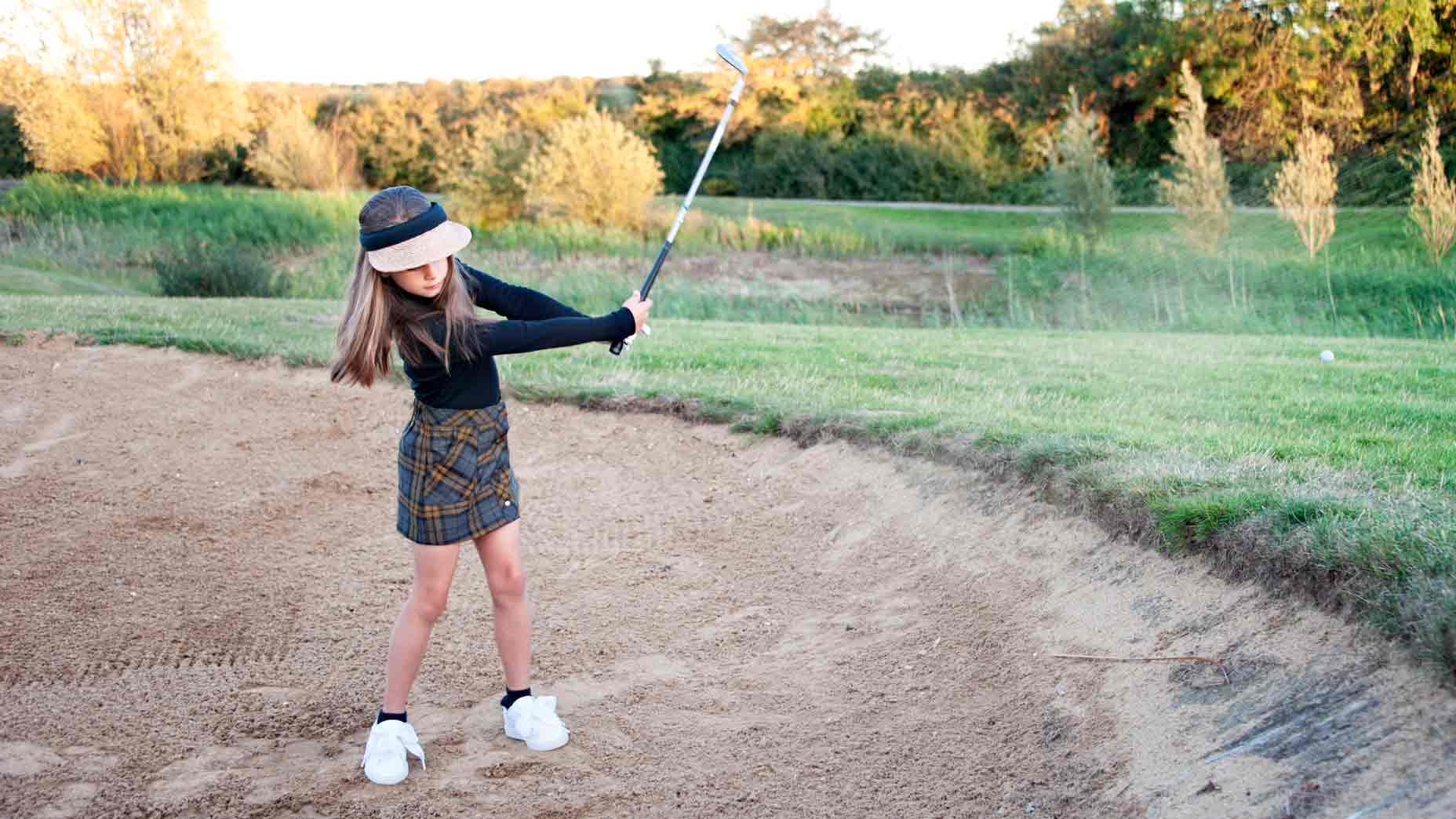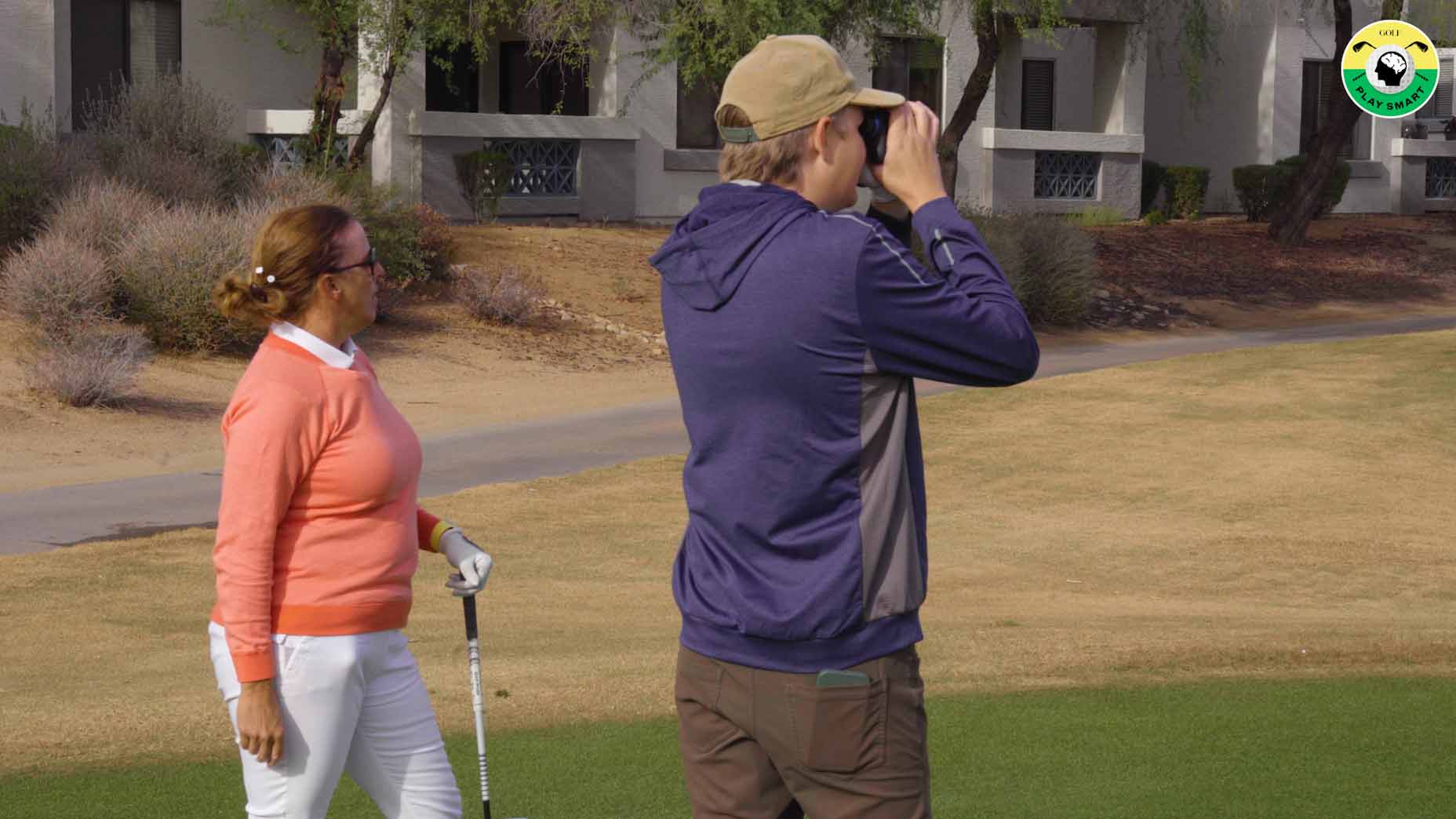6 ways for parents to develop (and encourage) a junior golfer

If you're a parent trying to get a kid into the game of golf, these youth golf lessons are a great place to start developing their skills.
Getty Images
Welcome to Play Smart, a regular GOLF.com game-improvement column that will help you play smarter, better golf.
As I’ve gotten older, many of my friends often ask me if there’s a secret recipe for getting kids into the game of golf. My answer typically leans towards signing them up for youth golf lessons, where they can learn the basics of the game, work on a variety of swings and situations, and develop a passion for the (oftentimes) frustrating sport.
However, since many parents don’t even work with a golf teacher to improve their own game, there’s typically reluctance when I give my answer. Similarly, parents don’t want to spend money on a teacher if their kid is disinterested in the game. I find that many of the parents just want to introduce their kids to golf, without forcing the sport on them, hoping that the kid naturally enjoys playing.
There’s just one problem with that plan: Many parents are afraid to teach their kid the wrong way, fearing they’ll instill bad habits or tell them the wrong things. This obviously makes sense, as many parents aren’t trained to give youth golf lessons.
But for all those parents looking to play the role of a golf teacher as their kid gets introduced to golf, Grayson Zacker — the Director of Instruction at Jim McLean Golf Schools — has some tips to help.
How parents can provide at-home youth golf lessons
Since parents play a vital role in their children’s golf development, Zacker says it’s important for them to focus on visual learning.
“Kids are great visual learners, and they learn so much in life from watching their parents. Children of great players usually turn out to be great players themselves, not just from genetics, but from copying the habits and behaviors of their parents. They see what it takes to be good.”
But even if the parent isn’t a great golfer, Zacker suggests giving the youth golf lessons below, which will help develop a junior golfer and encourage better play.
Foster a love for the game
This should be goal number one. If the kid loves to play, they will want to spend more time around the game, and will focus on ways to get better. The motivation to get better is the main determining factor for improvement. They will find a way.
One way to mix things up is by incorporating games into practice.
Use putting games, chipping games, different full-swing contests. Develop the competitive spirt early on, and they will stay motivated to improve. Golf requires a lot of time and patience, so if they’re not having fun, they could get burnt out and quit.
Expose kids to great golf
Remember that whole “visual learning” thing? This plays off of that idea.
So take your kid to a PGA or LPGA tour event. Go early and watch the players warm up on the range, short-game area, and practice putting green. Attend the practice rounds a day or two before the competition, where there are less crowds, allowing you to get a lot closer to the players. If you can’t get to an event, watch golf with them on TV.
Lastly, try to find good players at your club or in your area, and ask them if they will take your kid to play and practice with them.
Encourage practice
First, provide your child access to a driving range, short-game area, and practice putting green. Then, teach them to set attainable practice goals where they are trying to achieve something, rather than just aimlessly whacking balls.
Examples of this would be hitting a draw, a fade, a straight shot, hitting the dead center of the face three times in a row, making a handful of five-foot putts in a row, or chipping 10 balls within three feet of the hole. Consistent practice is the key to improving golf skills.
Get juniors on the golf course
Book them regular tee times and sign them up for tournaments. When kids are just starting out, it’s wise to start them very close to the hole. Have them tee off 50 yards from the green and learn to keep score. Once they can shoot even par from that distance, they can graduate to 100 yards, then 150, 200, 250, then the red tees, and white tees.
By doing the above, they will learn the importance of the short game and course management for scoring. I usually let them hit a drive from the tee box and then pick it up. This just helps them get some driving practice, but allows them to ignore their yardage or landing spot.
Motivate
Celebrate their successes, and help them learn from their failures, which allows them to grow and improve. Golf is very challenging — every player makes mistakes and gets frustrated at times. By teaching them to embrace adversity with an open mind and a sense of curiosity, they will see the opportunities for improvement.
Never dwell on the bad shots, and, instead, remind them what they did well. This will encourage positivity and more good shots.
Find a good coach
OK, now that the parent has helped pique their kid’s interest in the sport, it’s time to leave the real youth golf lessons to a professional, allowing the young player to develop the technical and mechanical parts of their game. So find a qualified teacher that has experience developing juniors.
Many times, beginner teachers are the ones teaching the junior golf lessons. This is because many veteran coaches don’t enjoy teaching kids who aren’t motivated to play. If you follow the advice above as an introduction into the game, your kid will be motivated, and the best teachers will want to teach them.
For those parents who also play golf, try working on your own game by playing with your kids. You will both enjoy the journey together, and can form a lifelong bond over the love of the game of golf.
By following this advice and taking a long-term approach to your child’s improvement, better play will be the byproduct. By focusing on the process and not the results, positive strives can be made.














